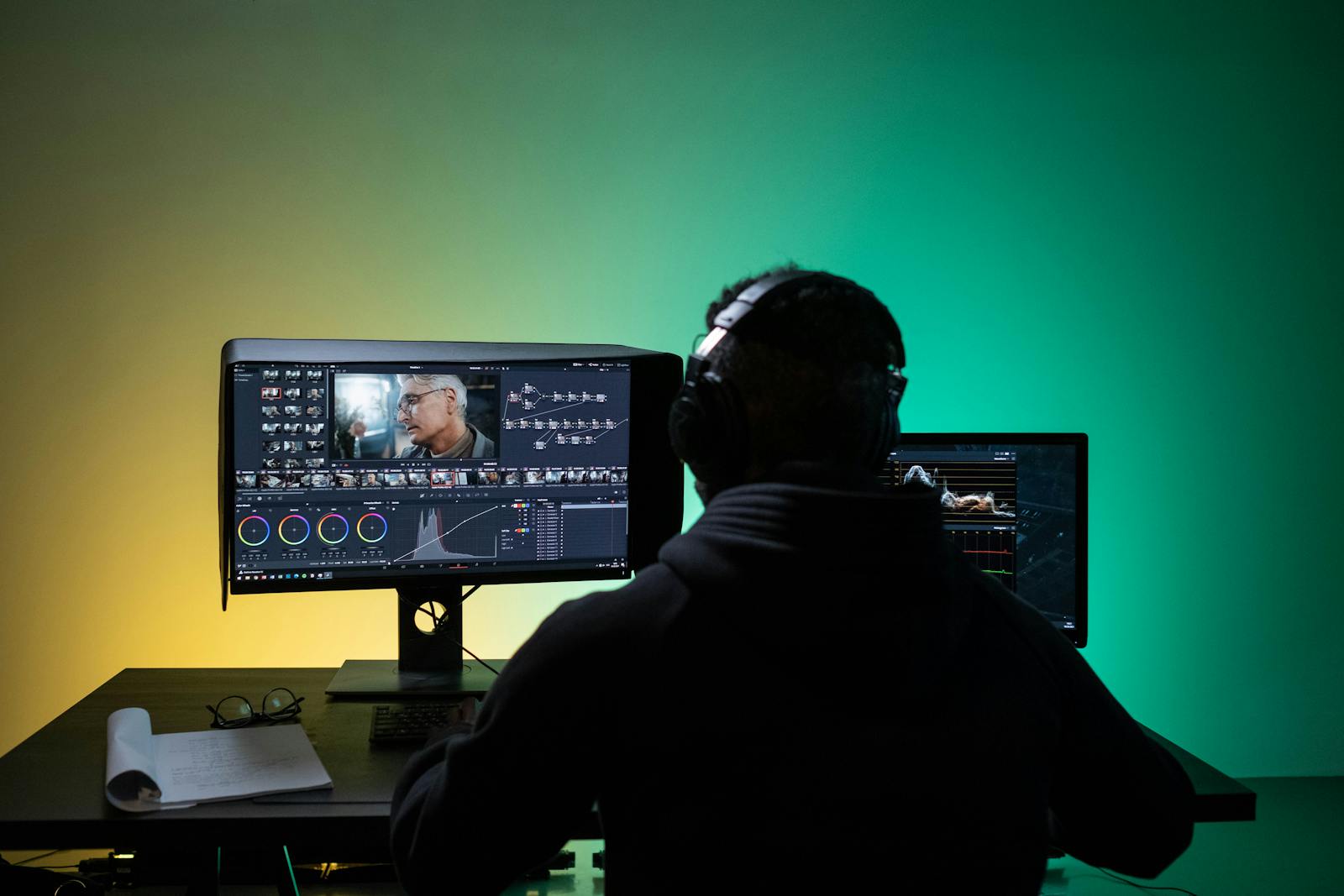Video Production Terms You Need To Know: A-to-Z Glossary
Understanding key video production terms is essential for anyone involved in creating or working with video content. Whether you are new to the field or looking to refine your knowledge, mastering video production vocabulary will ensure clear communication and efficient workflows.
This comprehensive guide covers essential production terms, from pre-production to post-production, helping you navigate the world of videography terms with confidence.
Having a firm grasp of these concepts can not only improve collaboration with your team but also enhance the quality of your final videos.
Video Production Terminology with Definitions
- Aspect Ratio: The proportional relationship between a video’s width and height (e.g., 16:9 for widescreen). It impacts how the video fits on various screens and devices.
- B-Roll: Supplemental footage used to support the main visuals. This content adds context and keeps the audience engaged.
- Frame Rate: The number of frames displayed per second (FPS) in a video. Higher frame rates produce smoother motion.
- Resolution: The detail level in a video, typically measured in pixels (e.g., 1080p or 4K). Higher resolutions ensure sharper and clearer images.
- Shot List: A detailed plan of all the shots to be filmed. This is a vital tool for maintaining organization during production.
Pre-Production Terms
Pre-production focuses on planning and organizing before filming begins. Mastering these video production terms will enhance this phase:
- Storyboard: A sequence of illustrations depicting how the video will unfold shot by shot. This provides a visual roadmap for the production team.
- Script: The written content, including dialogue, stage directions, and visual cues. A strong script ensures clarity in messaging.
- Call Sheet: A document listing daily schedules, locations, and contact information for the cast and crew. This is crucial for keeping everyone on the same page.
- Blocking: The precise positioning and movement of actors or objects within a scene. Good blocking ensures scenes look natural and flow seamlessly.
- Budget Breakdown: A detailed estimate of all costs associated with the production. This includes expenses for equipment, talent, locations, and post-production.
- Production Schedule: A timeline that outlines each phase of the project, helping to keep everything on track.
Production
The production phase involves capturing footage and audio. Understanding these video production terminology essentials will help streamline the filming process:
- Director: The person responsible for the creative vision and overall execution of the video. They oversee every aspect of the production process.
- Grip: A crew member who manages lighting and rigging equipment. Grips play a key role in setting up and maintaining the visual aesthetic.
- Slate: A device used to synchronize audio and video, often displaying the scene and take number. This tool is essential for post-production.
- Continuity: Ensuring consistency in props, wardrobe, and other elements across shots. This prevents noticeable errors in the final video.
- Boom Mic: A directional microphone attached to a long pole for capturing audio. It ensures high-quality sound without appearing in the shot.
- Gaffer: The head electrician responsible for the lighting plan. Their work significantly influences the mood and tone of the video.
Types of Shots & Camera Movement
Camera techniques play a vital role in storytelling. Familiarity with these camera terminology terms can elevate your production quality:
- Close-Up (CU): A shot tightly framing the subject, often the face, to highlight emotions. This is commonly used to create a sense of intimacy.
- Wide Shot (WS): A shot capturing the subject and their environment. It provides context and establishes the setting.
- Tracking Shot: A shot that follows the subject, typically using a dolly or stabilizer. This adds dynamic motion to the scene.
- Tilt: Moving the camera vertically, either up or down. Tilts are often used to reveal new elements in a scene.
- Pan: A horizontal camera movement from left to right or vice versa. This is ideal for capturing wide landscapes or following movement.
- Zoom: Adjusting the lens to bring the subject closer or farther away without physically moving the camera. This emphasizes details or shifts focus.
Post-Production
In the post-production with corporate video production toronto stage, raw footage is transformed into the final video. These video terms are crucial for understanding this process:
- Editing: The process of assembling and refining video clips into a cohesive story. Editing shapes the narrative and eliminates unnecessary content.
- Color Grading: Adjusting colors to enhance the mood and aesthetic of a video. This step ensures visual consistency across scenes.
- Rendering: The process of exporting the final video with all edits and effects applied. Rendering can take time depending on the complexity of the project.
- Keyframe: A marker defining the start and end points of an animation or effect. Keyframes allow for precise control over movements and transitions.
- Audio Sync: Matching audio to the corresponding video footage. This is critical for maintaining professional quality.
- Visual Effects (VFX): Adding digital enhancements to footage, such as animations or CGI. VFX can transform ordinary scenes into extraordinary ones.
General Terms
These general videography terms apply across all phases of video production and are useful in day-to-day communication:
- FPS (Frames Per Second): The rate at which frames appear, affecting video smoothness. Choosing the right FPS depends on the type of content being created.
- Codec: A device or program used to compress and decompress video files. Different codecs impact file size and quality.
- Green Screen: A backdrop that allows for the addition of digital backgrounds in post-production. This technique is widely used in films and commercials.
- Depth of Field: The range within a shot that appears sharp and in focus. Adjusting depth of field can draw attention to specific elements.
- Storyboard Artist: The professional responsible for visualizing and illustrating the storyboard. Their work helps bring abstract ideas to life.
- Lighting Plan: A detailed outline of how lighting will be set up for each scene. Proper lighting ensures the video looks polished and professional.
Conclusion
Mastering corporate video production terminology is invaluable for professionals and enthusiasts alike. From pre-production planning to post-production editing, understanding these video terms ensures smoother workflows and better collaboration. Whether you’re managing a team or refining your marketing, this glossary of camera terminology and related concepts will set you up for success in the dynamic world of video creation. With this knowledge, you can confidently navigate every phase of the production process and produce videos that leave a lasting impact.





